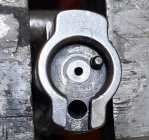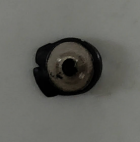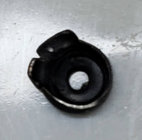1.Your using a double based, ball powder, containing Nitroglycerin. A light load with below normal neck tension. If using a standard primer, makes it worse.
Bullet moves to soon, secondary pressure spike. The bullet sitting in the rifling, acts same as a plugged barrel. High pressure.
2. Trim length to long. Bullet crimped in by chamber?
3. Cleaning compound let in case, reducing volume?
4. Defective brass? Not if fired 3 times before.
5. Loaded neck diameter larger then .276" ? Not likely, fired before.
To light of a powder charge. Best to use a magnum primer.
CCI LINK. "We tested loads at both maximum normal pressures and at the starting loads (some labs calculate start loads — we shot them). Standard primers caused no ignition issues at the max load but posted higher extreme variations in pressure and velocity in the lower pressure regimes of the start loads. In extreme cases, the start loads produced short delayed firings — probably in the range of 20 to 40 milliseconds but detectible to an experienced ballistician. Switching that propellant to a Magnum primer smoothed out the performance across the useful range of charge weights and completely eliminated the delays."
The .473" a sign of very high pressure.













